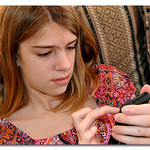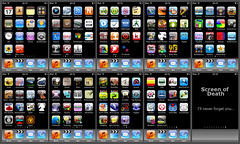Here are the reasons, which I suggest ought to be addressed by anyone who decides to create a PDF. Google penalises websites that are not mobile-friendly. PDFs that are not mobile friendly will be penalised simply by virtue of the fact that people won't read them or pass them on to others. So thinking mobile is important if you want your stuff to be read.
Font is too small
One of the drawbacks of reading a PDF on the kindle is that you can't alter the font size. So if the font is too small to start with, that's a big disadvantage. On a phone you can expand the text, but at the cost of having to scroll horizontally as well as vertically. It's not a great experience.
Poorly contrasting colours
Trying to read orange text on a white background is challenging at the best of times. Trying to do so on a Kindle that displays only in black and white is next to impossible.
White text on a black background
It might look good, but it's much harder to read than black text on a white background.
All capitals
IT'S PRETTY HARD TO READ TEXT THAT IS ALL UPPER CASE (ESPECIALLY IF THE TEXT IS SMALL, AND EVEN MORE SO WHEN THE COLOUR SCHEME IS POOR). WHY DO YOU THINK ROAD SIGNS TEND TO BE IN LOWER CASE? LOWER CASE AIDS READING BECAUSE BY SEEING THE SHAPES OF THE WORDS YOU CAN READ THEM MORE QUICKLY, AND IT'S LESS STRAIN ON THE EYES.
Conclusion
These days, a huge number of people access web-based content on a mobile device. According to a recent report, by 2017 mobile devices will generate 68% of internet traffic.
Unreadable PDFs, in which form is considered more important than function, really ought to be relegated to the dustbin of digital history.



















